Exploring the Brains of Conversational AI Chatbot vs Assistants
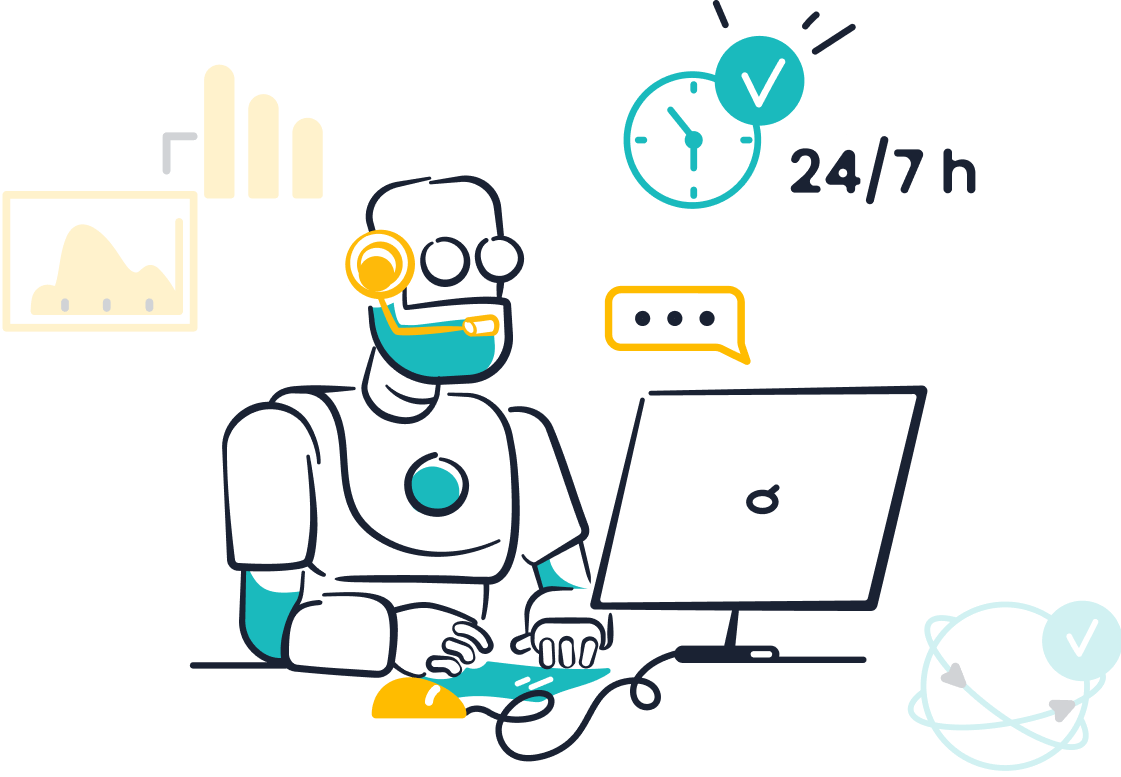
A customer browses an online store and quickly receives help from a chatbot that answers questions about returns. In another case, an AI assistant guides a shopper through a complex purchase. The core difference between conversational AI chatbot vs assistants lies in their technology, intelligence, and how they solve real-world problems. Businesses see strong results by choosing the right solution. For example, 54% of organizations now use conversational AI, and 93% of customer questions in e-commerce resolve without human help.
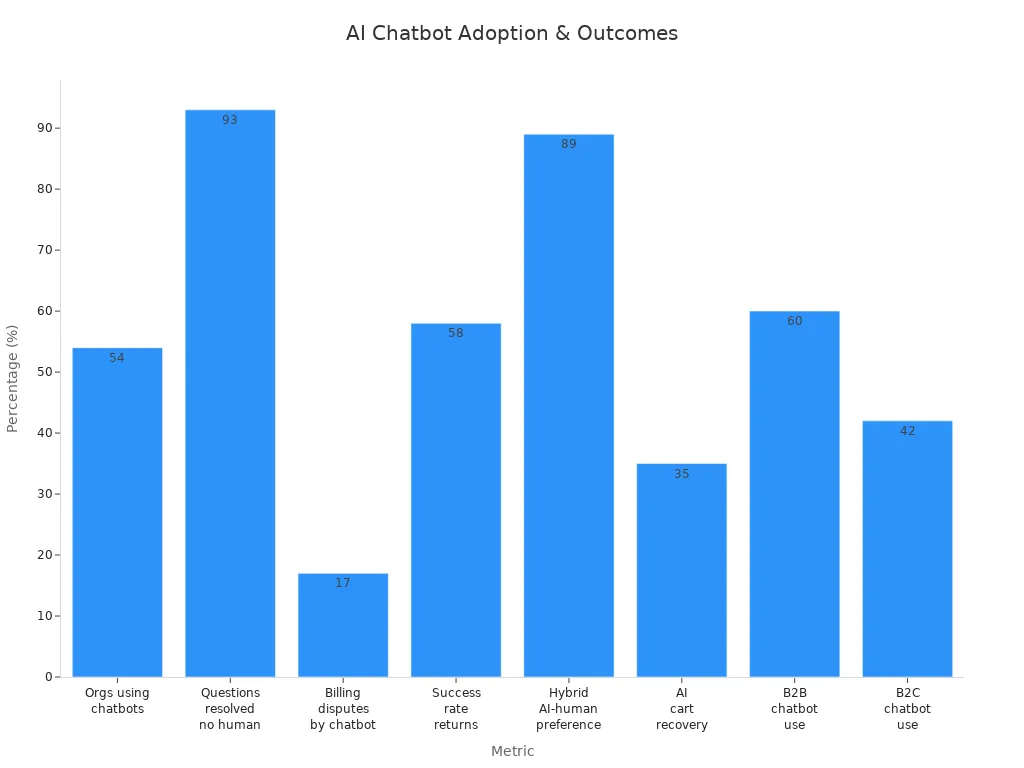
Sobot leads innovation in this field. Sobot AI and Sobot call center solutions help businesses improve efficiency and customer satisfaction.
Chatbot vs AI Assistant
Definitions
Chatbots and virtual assistants both help people interact with technology using conversations. A chatbot is a software program that uses rules or artificial intelligence to answer questions and guide users. Many chatbots use natural language processing, or NLP, to understand what people type. Some chatbots rely on simple scripts, while others use advanced AI to generate responses. Chatbots and voice assistants often work in customer service, e-commerce, and support roles.
AI assistants, sometimes called conversational assistants or voice assistants, go beyond basic chatbots. These assistants use advanced NLP, machine learning, and generative AI to understand complex requests. They can remember past conversations, adapt to user preferences, and support text, voice, or even video interactions. AI assistants manage multi-step tasks, such as scheduling or device control, and provide a more personalized experience.
Note: The main difference in the conversational AI chatbot vs assistants debate centers on adaptability and intelligence. Chatbots handle routine tasks, while assistants manage complex, context-rich conversations.
| Technological Aspect | Conversational AI Chatbots | AI Assistants |
|---|---|---|
| AI Sophistication | Use simpler AI models like predefined scripts or decision trees | Employ advanced AI including NLP, machine learning, and generative AI |
| Adaptability | Limited adaptability due to reliance on scripted responses | Highly adaptable, learns from user preferences using ML and generative AI |
| Contextual Awareness | Generally low, limited understanding of conversation context | High contextual awareness enabled by generative AI |
| Functionality | Handle basic, routine tasks and customer interactions | Manage complex, multi-step tasks like scheduling, device control, workflow automation |
| User Interface | Mostly text-based chat-box interfaces | Support text, voice, and sometimes video interfaces |
User Experience
User experience with chatbots and virtual assistants differs in several ways. Chatbots and voice assistants that use simple scripts provide predictable, consistent answers. These chatbots excel at answering FAQs, tracking orders, or solving basic problems. Users expect quick, reliable responses from these systems.
AI assistants, on the other hand, create more natural and engaging conversations. They use NLP and generative AI to understand context, remember previous interactions, and personalize replies. This makes conversations feel more human-like. AI assistants can handle complex or creative queries, making them suitable for tasks like content generation or workflow automation.
- Chatbots and virtual assistants reduce wait times for users to 33 seconds or less.
- AI chatbots lower average human agent handle time by 12%.
- Consumer engagement increases by 40% when businesses use conversational AI chatbot vs assistants.
| Aspect | Traditional Chatbots | AI Chatbots (e.g., ChatGPT) |
|---|---|---|
| Response Style | Predictable, scripted, consistent responses | Dynamic, context-aware, personalized, human-like responses |
| Interaction Flow | Fixed, linear dialogue | Flexible, engaging, able to maintain context over time |
| Adaptability | Limited to pre-defined rules | Learns from interactions, adapts to user inputs |
| Personalization | General replies | Tailored responses based on user context |
| Handling Complexity | Best for routine, simple queries | Handles complex, nuanced, and creative queries effectively |
| User Engagement | Limited due to lack of emotional intelligence | Enhanced engagement and satisfaction through natural interaction |
| Use Cases | FAQs, order tracking, basic troubleshooting | Broad applications including retail, banking, content generation |
Chatbots and virtual assistants continue to evolve. As AI, NLP, and machine learning improve, the gap between conversational AI chatbot vs assistants narrows. However, assistants still lead in adaptability, context awareness, and multi-modal support, making them ideal for more advanced user needs.
Conversational AI Chatbot vs Assistants: Technology
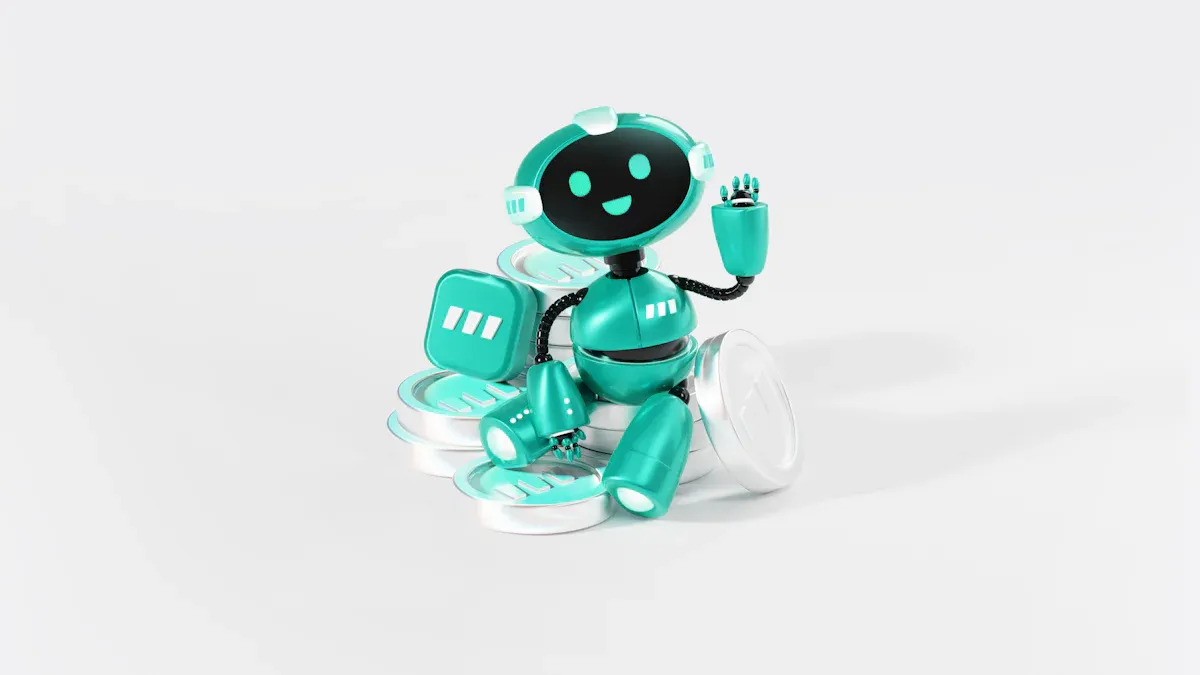
NLP & NLU
Natural language processing (NLP) and natural language understanding (NLU) form the backbone of modern chatbots and AI assistants. These technologies allow systems to interpret, analyze, and respond to human language in a way that feels natural and intuitive. Sobot leverages advanced NLP technology to power its AI chatbots, enabling businesses to deliver seamless customer service across multiple channels.
NLP technology breaks down user input into manageable pieces. The process starts with tokenization, which divides text into words or phrases. Named entity recognition (NER) identifies important items such as names, locations, or product types. Dialogue management keeps track of the conversation, ensuring the chatbot understands context and can handle multi-turn interactions. These components work together to help chatbots recognize user intent and generate accurate responses.
Sobot Chatbot uses NLP and NLU to combine sentiment analysis with conversational AI. This approach detects customer emotions in real time, allowing for personalized and contextually relevant replies. Sobot’s AI-powered communication supports over 50 languages, making it ideal for global businesses.
Key components of NLP and NLU in chatbots and assistants include:
- Tokenization: Breaking text into smaller units for analysis.
- Named Entity Recognition: Identifying and classifying entities such as names or products.
- Dialogue Management: Maintaining context for multi-turn conversations.
- Intent Recognition: Determining the user's goal.
- Response Generation: Creating replies using knowledge bases or natural language generation.
- Feedback and Learning: Improving responses through machine learning chatbots.
- Output Rendering: Delivering responses in text or speech.
Sobot integrates with e-commerce and CRM platforms, using NLP technology to provide real-time order updates, returns processing, and product recommendations. The chatbot supports omnichannel interactions, including WhatsApp, SMS, and social media. Real-world results show Sobot’s chatbots improve automated resolution rates by 15-35% and reduce service costs by up to 50%. For example, OPPO achieved an 83% chatbot resolution rate and a 57% increase in repurchase rates after implementing Sobot’s AI chat.
Machine Learning & Deep Learning
Machine learning chatbots and deep learning models have transformed the capabilities of conversational AI. These technologies enable chatbots and assistants to learn from data, adapt to new situations, and improve over time. Sobot’s AI-powered technology uses supervised learning, unsupervised learning, and reinforcement learning to train its chatbots for better performance.
Common machine learning techniques include:
- Supervised learning: Training on labeled data to recognize patterns.
- Unsupervised learning: Discovering hidden structures in data.
- Reinforcement learning: Improving responses based on user feedback.
Deep learning uses neural networks to mimic human brain functions. Transformer-based models such as BERT and GPT allow chatbots to understand context, detect intent, and analyze sentiment. Sequence-to-sequence models and attention mechanisms help chatbots focus on important parts of the conversation and maintain context. These models enable chatbots to deliver more human-like and personalized responses.
Sobot Chatbot integrates deep learning to understand context, sentiment, and intent. This approach leads to more natural conversations and higher customer satisfaction. Companies using AI chatbots report up to a 25% increase in customer satisfaction. Sobot’s integration with CRM systems enables personalized support and predictive capabilities, increasing conversion rates.
| Benefit | Description | Measurable Impact / Statistic |
|---|---|---|
| Customer Satisfaction | Deep learning enables better natural language understanding and context retention, leading to more natural conversations. | Up to 25% increase in customer satisfaction; 73% of shoppers report smoother experiences |
| Cost Efficiency | Chatbots reduce interaction costs significantly compared to human-led support. | Cost per interaction reduced from ~$6 to ~$0.50 (Creole Studios, 2025) |
| Time Savings | Chatbots save time by handling inquiries faster, especially in finance. | Approximately 4 minutes saved per inquiry (Tidio, 2024) |
| Availability | 24/7 availability ensures customers get help anytime, improving satisfaction. | Continuous support without downtime |
| Engagement | Personalized and context-aware responses improve user engagement. | Enhanced engagement through hyper-personalization and sentiment analysis |
| Scalability | Ability to handle multiple queries simultaneously, unlike rule-based systems. | Supports high or variable demand efficiently |
Sobot’s AI chatbots use these advanced models to deliver scalable, efficient, and engaging customer service. The platform supports high volumes of interactions without performance loss, making it suitable for businesses with variable demand. Sobot’s AI chatbots continuously learn from interactions, improving accuracy and user satisfaction over time.
Generative AI
Generative AI represents the latest advancement in conversational AI. This technology enables chatbots and assistants to create new content, such as text, images, or even music, by analyzing patterns in data. Sobot Chatbot integrates multiple large language models (LLMs), including OpenAI’s ChatGPT (GPT-4o), Amazon Bedrock, Anthropic Claude, and DeepSeek, to power its AI chat capabilities.
Generative AI enhances chatbots and assistants in several ways:
- Enables chatbots to generate human-like, contextually relevant responses.
- Reduces wait times and handles complex queries.
- Improves personalization by drawing from customer history.
- Provides 24/7 support across multiple channels.
Sobot developed small language models (SLMs) tailored for industry-specific tasks, such as retail and e-commerce, to improve response speed and accuracy. The generative AI capabilities allow Sobot’s chatbots to decompose knowledge, retrieve relevant content, and compose intelligent replies. This approach improves customer service quality and operational efficiency.
| Application Area | How Generative AI Enhances Conversational AI Chatbots and Assistants |
|---|---|
| Customer Service | Generates human-like, contextually relevant responses, reducing wait times and handling complex queries. Improves personalization and provides 24/7 support. |
| Marketing and Sales | Collects data during interactions, enabling tailored marketing strategies and better understanding of customer preferences. Enhances engagement and conversion rates. |
| Retail | Supports end-to-end online shopping experiences, including order management and customer support. Provides personalized product suggestions, improving engagement and reducing cart abandonment. |
| Banking and Financial | Generates personalized financial advice by analyzing customer data. Assists with routine transactions and fraud detection. |
| Insurance | Automates claims processing and underwriting by generating risk profiles. Speeds decision-making and reduces errors. |
| Healthcare | Generates personalized treatment plans and predictive diagnostics. Virtual assistants manage appointments and medication reminders. |
| Pharma and Drug Discovery | Accelerates drug discovery by generating and screening molecular structures. Reduces time and cost of development. |
Sobot’s AI solution supports omnichannel interactions across websites, mobile apps, social platforms, email, phone calls, and SMS. The platform implements multiple AI roles, including AI Agent, AI Copilot, and AI Insight, to enhance customer service and provide analytics dashboards for administrators. Sobot’s AI chatbots emphasize secure AI, complying with global data privacy standards.
Sobot’s AI-First strategy and Five-AI system launched in 2024 highlight its commitment to integrating cutting-edge generative AI technologies. Core technologies include NLP, ASR, LLM, and TTS, enabling intelligent, human-like voicebot interactions that can independently resolve customer issues.
Generative AI allows chatbots and assistants to predict customer needs, gather contextual information, and reduce repetitive tasks. This approach improves agent efficiency and customer satisfaction. Sobot’s AI chatbots support multilingual, multi-source knowledge bases and scenario-based AI, making them ideal for e-commerce and retail sectors.
Intelligence & Adaptability in Chatbots and Virtual Assistants
Context Awareness
Chatbots and virtual assistants show different levels of context awareness in conversations. Chatbots often treat each interaction as a single event. They excel at handling high volumes of simple, predictable questions. Virtual assistants, including voice assistants, remember previous conversations and user preferences. They use advanced AI techniques like deep learning and natural language processing to manage complex, multi-step tasks. This allows them to provide more flexible and proactive support.
| Aspect | Conversational AI Chatbots | Virtual Assistants |
|---|---|---|
| Contextual Memory | Limited; treat each interaction as isolated | Strong; remember previous interactions, user preferences, and integrate info from other apps |
| Task Scope | Handle specific, well-defined tasks within a single domain | Manage complex, multi-step, dynamic interactions across multiple domains and applications |
| AI Techniques | Reactive learning, generative AI within domain limits | Use NLU, deep learning, multi-agent LLM architectures for proactive and flexible problem solving |
| Integration Capability | Limited to predefined workflows | Integrate with enterprise systems and external applications for enhanced context and task management |
Virtual assistants adapt to new data and trends, providing tailored help. Chatbots and virtual assistants both use AI to reduce confusion and improve intent recognition, making conversations smoother and more natural.
Personalization
Personalization drives user engagement in chatbots and virtual assistants. AI analyzes every conversation, learning from user data and behavior. This enables chatbots and voice assistants to offer tailored recommendations and support. Integration with CRM systems lets them use purchase and search history for more relevant responses. Companies like Sephora and H&M have seen higher sales and engagement by using AI-powered personalization.
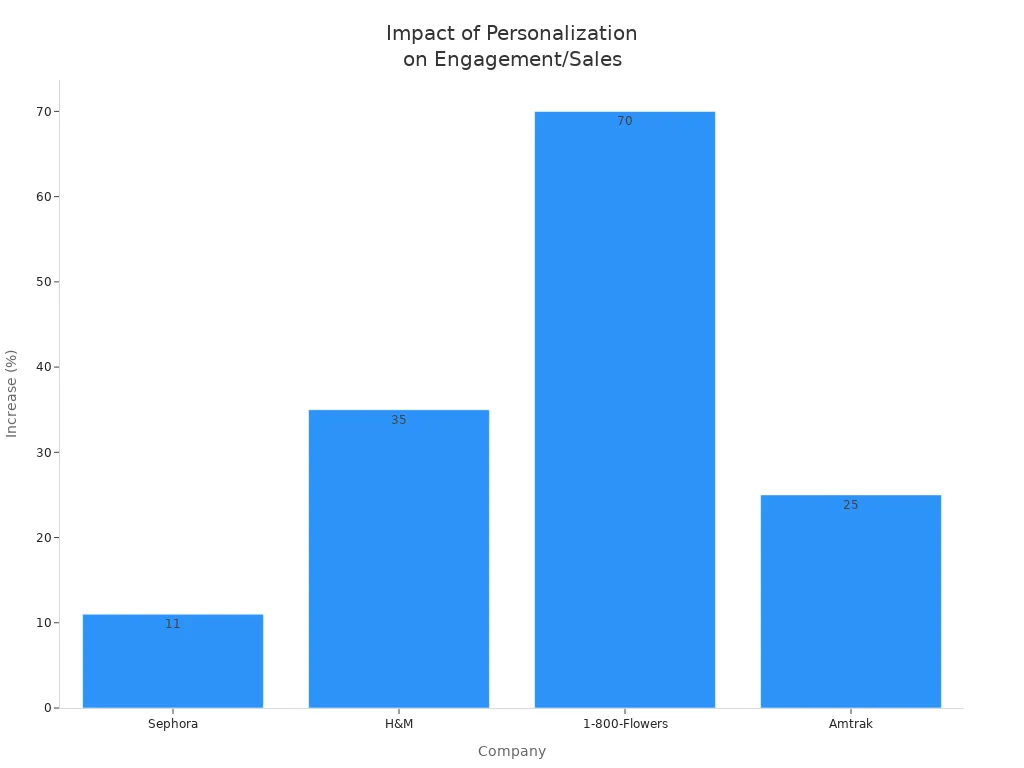
Sobot’s AI chatbots and virtual assistants use machine learning and NLP to understand intent, context, and sentiment. They support 24/7 availability and scale to meet demand. Continuous learning helps refine personalization, making each conversation feel more human and adaptive.
Real-World Applications
Businesses use chatbots and virtual assistants across many channels, including chat, email, social media, and messaging apps. Sobot’s AI platform ensures consistent, omnichannel support. Its multilingual chatbots and voice assistants respond instantly in over 50 languages, closing language gaps and improving global engagement. Sobot’s customer, OPPO, achieved an 83% chatbot resolution rate and a 57% increase in repurchase rate after deploying Sobot’s AI-driven solutions. These results show how intelligence and adaptability in chatbots and virtual assistants lead to higher satisfaction and efficiency.
Metrics such as response time, resolution rate, and user satisfaction help measure the intelligence and adaptability of chatbots and virtual assistants. Sobot’s AI-powered solutions deliver high performance in these areas, supporting natural conversations and seamless customer experiences.
Challenges in AI
Context Understanding
Chatbots and voice assistants face big challenges in understanding context. Human language is full of slang, dialects, and ambiguous words. Sometimes, these systems misinterpret what users mean or fail to recognize the right intent. For example, if a customer says, "Cancel my last order," chatbots and voice assistants may not know which order the user means without more information. In customer service, missing context can lead to mistakes, like canceling all services instead of just one. AI systems need memory, adaptive intent recognition, and the ability to use real-time data. Without strong context understanding, chatbots and voice assistants can create poor user experiences and even operational risks.
- AI systems struggle with slang, dialects, and ambiguous phrases.
- Lack of context can cause errors in customer service and healthcare.
- Memory and adaptive learning help improve context understanding.
Data Privacy
Data privacy is a major concern for chatbots and voice assistants. These systems often collect and store sensitive information. Courts have ruled that recording conversations without clear consent can break privacy laws. Companies must make sure users know when their data is being collected. Risks include unauthorized data access, surveillance, and even profiling. Some voice assistants may record private conversations by accident. To protect users, companies should use encryption, limit data storage, and get clear consent. Privacy-by-design and regular audits help keep data safe and build trust.
- Persistent logging and metadata collection can lead to surveillance risks.
- Legal risks increase if users do not give clear consent.
- Encryption and data minimization are important safeguards.
Integration
Integrating chatbots and voice assistants with existing business systems is often complex. Many companies use older software like CRMs or ERPs that may not work well with new AI tools. This can cause data silos and limit what chatbots and voice assistants can do. Upfront costs for integration, training, and maintenance can be high. Companies must also keep these systems updated to avoid errors and security risks. Seamless integration helps chatbots and voice assistants provide accurate, personalized responses and improves efficiency.
- Legacy systems may lack APIs or compatibility.
- Integration costs and technical challenges are common.
- Ongoing maintenance is needed to keep systems working well.
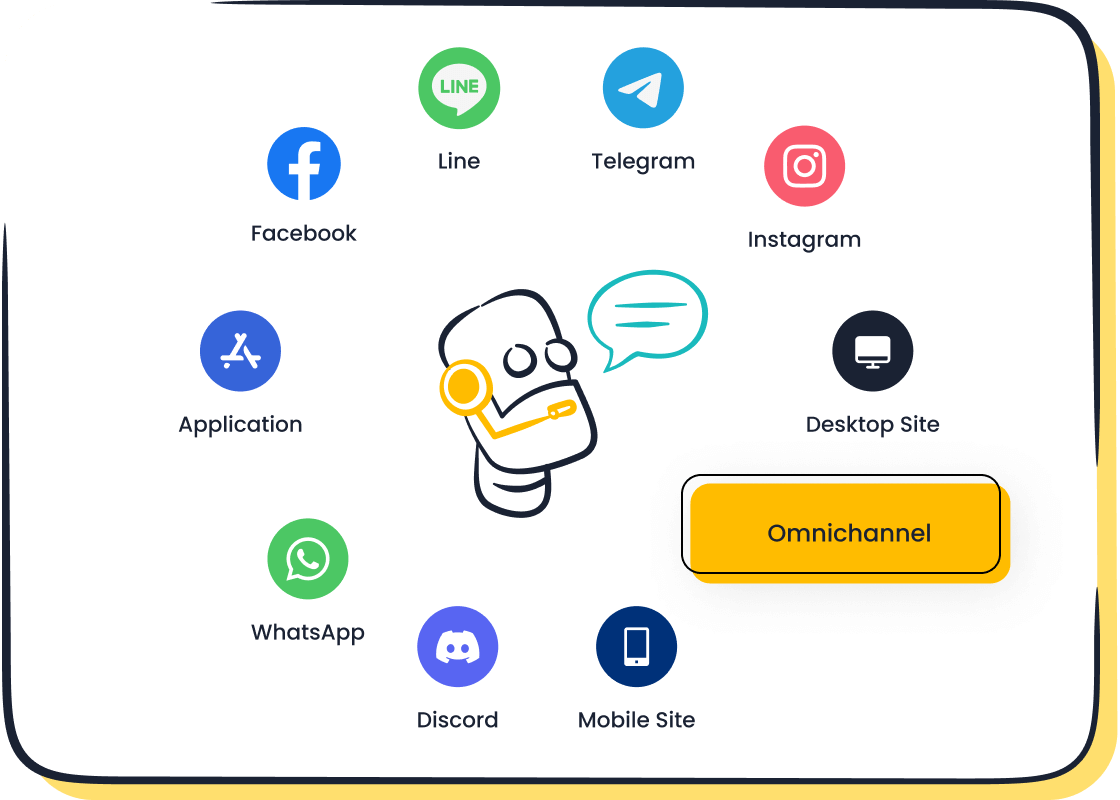
Use Cases: Sobot Chatbot in Customer Service
Retail & E-Commerce
Retail and e-commerce companies use chatbots and virtual assistants to improve customer support and drive sales. Sobot’s customer service tool helps businesses answer product questions, check pricing, and provide real-time availability. This reduces the workload for human agents and speeds up customer service interactions. Companies like Alibaba Group saw a 35% increase in sales conversion rates and a 20% rise in average order value after using AI chatbots and virtual assistants. H&M reported a 15% sales boost, while Intercom cut customer qualifying time by half. Chatbots and virtual assistants respond three times faster than human agents, which leads to higher customer satisfaction. In fact, 74% of customers prefer chatbots and virtual assistants for basic tasks.
| Industry | Use Case Description |
|---|---|
| E-commerce | Real-time customer support for product info, pricing, and availability, reducing human workload and improving response times. |
| Banking | Automated assistance in mobile apps for account balances, transaction history, and troubleshooting, enhancing user experience. |
| Healthcare | Chatbots for appointment scheduling, FAQs on medical procedures, and basic health info, easing staff burden and improving patient engagement. |
| Travel | Assistance with booking inquiries, travel info, itinerary changes, handling complex queries about flights, hotels, and destinations. |
| Telecommunications | Virtual assistants for troubleshooting network issues, account management, and billing info, reducing call center volume. |
| Education | AI tutors answering course questions, providing study resources, and personalized learning recommendations, offering 24/7 support. |
| Automotive | Virtual showrooms for vehicle specs, pricing, availability, guiding users through buying process and scheduling test drives. |
| Human Resources | Chatbots assisting with leave requests, benefits, and policies, reducing HR staff workload and providing quick employee access. |
| Government | Virtual assistants helping citizens access public services, regulations info, and administrative tasks, improving efficiency and engagement. |
| Hospitality | AI concierge services assisting hotel guests with room service, local recommendations, and facility info, enhancing guest experience. |
Operational Efficiency
Chatbots and virtual assistants help companies manage customer service across many channels, such as WhatsApp, Instagram, and Telegram. Sobot’s platform allows agents to handle conversations from live chat, email, and voice in one place. This unified workspace increases reception efficiency by 48% and reduces average handle time by 41%. The first-contact resolution rate improves by 54%, which means customers get answers faster and need fewer repeat contacts. Sobot’s AI-powered voicebot and AI Copilot features support agents with real-time suggestions and automate ticket creation. The system offers 99.99% uptime and easy integration with CRM systems, making operations stable and reliable.
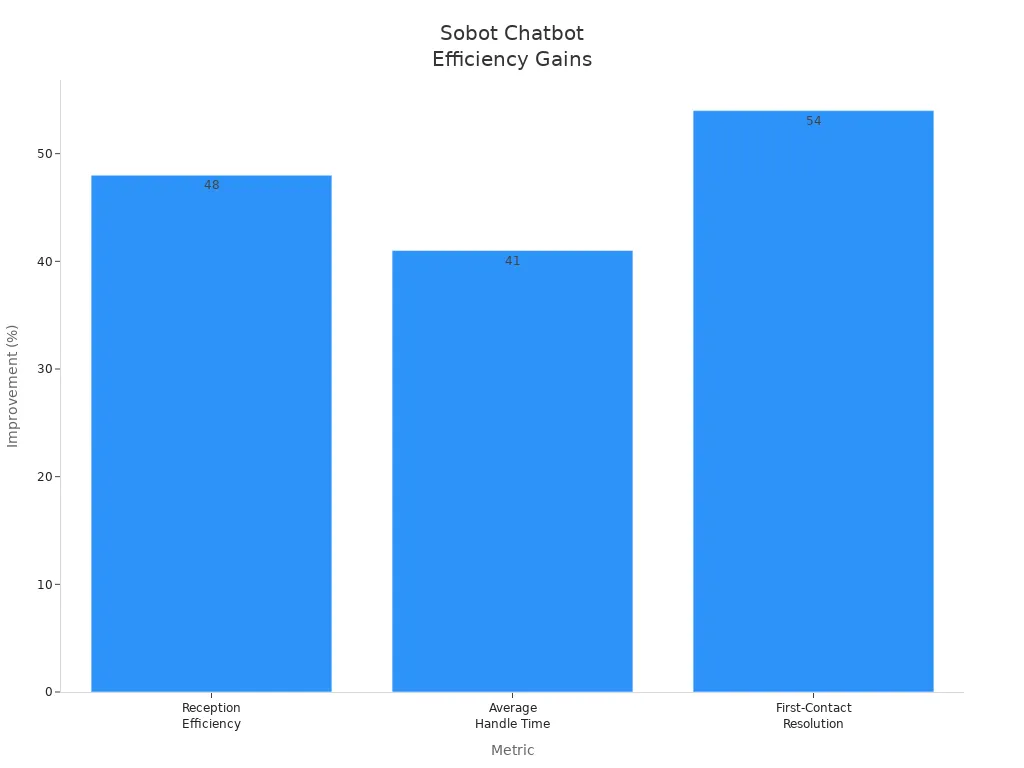
Customer Success Stories
Sobot’s solutions have transformed customer support for many brands. OPPO, a global smart device leader, used Sobot’s chatbot to manage high volumes of customer service requests during peak times. The chatbot resolved 83% of support requests without human help. OPPO saw a 94% positive feedback rate and a 57% increase in repeat purchases. Sobot unified OPPO’s customer service portals, integrated CRM and knowledge base systems, and automated knowledge updates. This allowed agents to focus on complex issues and improved overall service quality. Sobot’s all-in-one platform supports retail, e-commerce, finance, gaming, and more, making it a top choice for businesses seeking efficient customer support.
Industry experts highlight key differences between conversational AI chatbots and assistants:
- Chatbots handle simple, repetitive tasks and offer fast, cost-effective service.
- Assistants manage complex, multi-step conversations and adapt to changing needs.
Sobot stands out with human-like communication, high answer accuracy, and seamless omnichannel integration. Companies using Sobot AI report faster ticket resolution and improved customer satisfaction. As the future of AI chatbots evolves, businesses will see more personalized, 24/7 support and smarter service experiences.
FAQ
What is the main difference between a conversational AI chatbot and an AI assistant?
A conversational AI chatbot answers simple questions and handles routine tasks. An AI assistant manages complex conversations, remembers past interactions, and adapts to user needs. Both use artificial intelligence, but assistants show higher adaptability and intelligence.
How does Sobot’s chatbot improve customer service in retail and e-commerce?
Sobot’s conversational AI chatbot provides instant answers, supports multiple languages, and works 24/7. It reduces wait times, increases resolution rates, and helps businesses boost sales. Many companies report higher customer satisfaction after using Sobot’s AI-powered solutions.
Can a conversational AI chatbot handle multiple channels at once?
Yes. A conversational AI chatbot like Sobot’s supports omnichannel communication. It manages chats, emails, voice calls, and social media messages in one place. This unified approach improves efficiency and ensures customers get quick, accurate responses.
Why is context awareness important for conversational AI chatbot vs assistants?
Context awareness helps conversational AI chatbot vs assistants understand user intent and provide relevant answers. Chatbots with strong context awareness remember previous questions and adapt replies. This leads to smoother conversations and higher customer satisfaction.
How does generative AI enhance conversational AI chatbot vs assistants?
Generative AI allows conversational AI chatbot vs assistants to create human-like responses. It helps them handle complex queries, personalize replies, and predict customer needs. This technology makes conversations more natural and engaging for users.
See Also
How To Select The Most Effective Chatbot Software
Simple Steps To Add Chatbot Examples On Websites
Ways Chatbots Enhance Customer Experience In E-commerce
